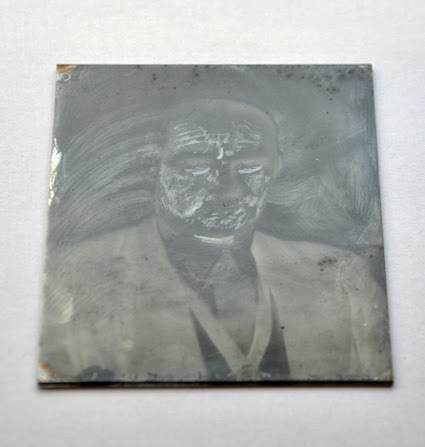Reproduced below is part of the introduction from The Winter's Collection of Derby, volume II, published in 1996.
I'll be talking to Hubert of the next few weeks to get a update - note the absence of any mention of digital photography twenty years ago!
My Winter's Apprenticeship
by H.W.King
(written in 1995)My family's association with W.W.Winter Ltd began in 1896 when my grandfather joined the company as a photographic assistant, becoming the sole proprietor by the time I was born. Some of my earliest memories are about Winters, for the company played such an important role in all my family's life and it seemed inevitable that I would develop a keen interest in photography. I found both my grandfather and uncle, Austin, very informative and I learnt lot about photography, printing and so on, even before my formal training began.
When I left school at the age of 14, I joined the company as an apprentice. My first responsibility was washing prints to remove all trace of the chemicals. This was done with bare hands in cold, running water, which during wintertime became ice-cold, something which I remember with painful memories!
My early years at Winters coincided with a successful time for Derby County Football Club. The company had been the official photographers for many years and when the Rams won the FA Cup in 1946, we were asked to go to the Baseball Ground to take some photographs of the team with the trophy. I was asked to carry the coveted FA Cup on to the pitch ready to be photographed — and as a Derby County supporter, I found this a tremendous honour.
Having mastered the art of daylight printing, I was relieved to be moved inside to the comparative warmth of the retouching room, to be taught the skill of retouching. By today's standards, glass negatives were very basic at that time and presented many limitations when printed. Using special graphite pencils, negatives had to be retouched to some degree to
enhance the subsequent print. At the same time, it was possible to remove any unwanted wrinkles and skin blemishes, thus making the subjects appear more youthful, possessing what could be virtually flawless skin.
When I was 18, I started a course at the Nottingham College of Arts and Crafts. Having learnt many of the basics in a practical setting, the course gave me the opportunity to learn more theory and to gain an understanding of more advanced photographic applications. And it was only towards the end of the course that I was finally allowed to do some studio photography.
Photography has changed so much since I took my first photograph. The equipment was so heavy and bulky, there was no electronic flash and negatives were made of glass. By today's standards, the basic nature of the technology presented many limitations. It is so much more controllable today. The time it would take just to take one photograph meant that it was all too easy to 'miss the moment', especially when photographing animals and children. Half-plate size glass plates (61/2ins x 43/4ins) would be already loaded in the slides. The camera would then have to be focused. A magnifier would be placed on to the ground glass screen which was then moved backwards and forwards to find the point of sharp focus. A slide would then be loaded into the camera back. After as much as one full second exposure time, the exposed slide would be removed, the camera refocused and another unexposed slide put in its place. All this had to happen before the photographer could even begin to think about catching the required expression. During a portrait session today, several frames on a roll of film can be exposed in a matter of seconds, something which is now considered essential, especially when photographing animals and children.

Time was also the critical element in doing photography on location, particularly at weddings. Using the 5in x 4in press camera, I was soon covering weddings. This camera was small enough to be hand held and was much more flexible than the larger, more bulky studio cameras. However, though the negatives were smaller, the slides still had to be changed manually after each exposure. Because of the length of time involved in preparing the camera, and because the glass negatives were still relatively bulky, the wedding coverage was generally limited to about 24 shots, as opposed to today's 60 or more. The sheer logistics of taking on site heavy glass negatives made a more extensive wedding coverage very difficult.
W.W.Winter Ltd has proved to be an ideal place to learn about photography. This was true for myself as well as for the people who have worked for the company since. Being general practitioners in the field of photography, it was possible to learn about every aspect of the trade, adopting the new technology when it arrived without forgetting the more traditional skills. However, the one thing which I learnt when I first started - and something which the company still values today - is the importance of good service.
































